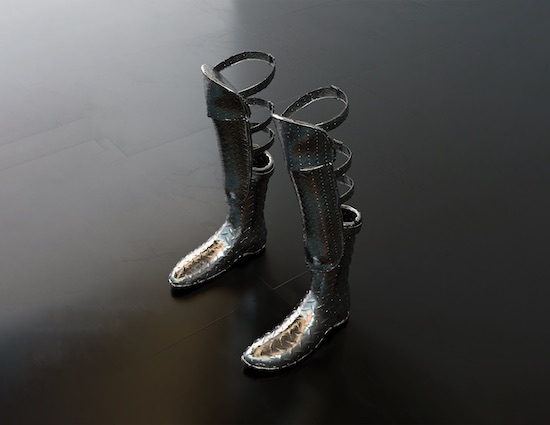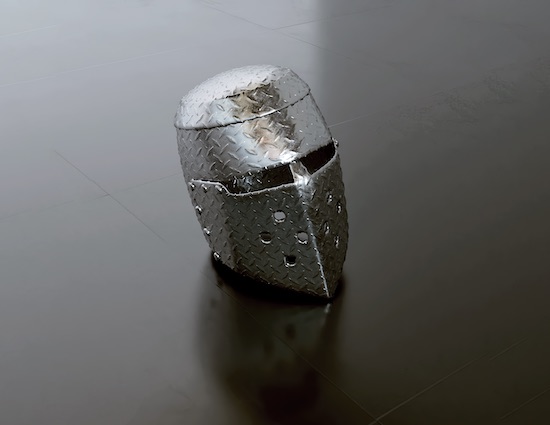Images by Jack Warne
As a species, we humans like a good story. Storytelling is fundamental to who we are, foundational to our cultural identities, tied into our whole concept of truth. You know, all that jazz. Such is our need for narrative – and by extension recognisable depictions of things through which we can create narrative – that art eschewing it still rankles a certain class of reactionary doofus. To some, lack of narrative in an artwork is only acceptable in exchange for function: “Can you dance to it?” To others, it’s fine so long as the story behind the art has a solid hook.
Which brings us to the realm of autobiography. In our post-pop music society, musicians, more than perhaps any other type of artist, are expected to lay themselves bare before the audience. Beyond that, even if they aren’t laid bare, it’s regularly assumed that they are. See, for instance, every hip-hop artist who’s ever had to explain the idea of fiction to a group of censorious concerned citizens.
But here’s the deal: artists don’t owe us narrative, and they sure as hell don’t owe us autobiography. Let’s be real. Autobiography generally comes with trauma, to one degree or another. And artists definitely don’t owe us that. Complicating matters further, when it comes to marginalised groups, trauma is often what non-marginalised audiences want, whether subconsciously or not.
Complicating things even further than that, sometimes albums come along that, through their title and artwork, seem to insist on an autobiographical openness, but contain soundworlds so insular and particular to the artist themselves that they confound such a reading. Or, perhaps more accurately, in a practical sense, as autobiography they become unreadable without a primer. Which isn’t to say albums like this are unsuccessful. They’re probably more interesting for it. In any case, GAUNT’s striking debut LP of atmospheric, sample-heavy, instrumental electronics, Blind At The Age Of Four, is one of those records. Deeply nocturnal and lightly nostalgic, it plays out like a syrupy pirate radio transmission of late-nite come-downs. If you wanted to, you could leave it there and walk away perfectly satisfied as a listener. But the curious will want to know about that title. And who’s this GAUNT dude?
GAUNT is Jack Warne, and Jack Warne is pretty much an open book. For real, the interview / presser that accompanied this thing is over 1,200 words long. Still, it’s full of insights into Warne’s methodology and background. In a way, it’s more like the essays that typically accompany an art exhibition. Which makes a certain sort of sense. A Royal College Of Art guy, Warne has equal facility with both the audio and visual sides of the hyphenate. And to be sure, the artwork and videos that have accompanied his GAUNT project thus far seem as considered as the music. Their smudged, petroleum-jelly look providing further clues as to the story and meaning behind all of it.
Warne has Thiel-Behnke dystrophy, a type of corneal dystrophy occurring in the Bowman’s layer of the cornea. Distinguished from its close cousin Reis-Bücklers corneal dystrophy by the distinctive honeycomb-patterned opacities it creates, in Warne’s case it led to painful, temporary blindness starting from, well, the age of four. You can imagine the effect such a condition would have on a little kid. And in a sense, if I’m reading my GAUNT primer correctly, that’s largely what the album is about. Or at least the memory of that experience.
Armed with that intel, the process of listening changes. The open-endedness of GAUNT’s lyric-free tunes becomes something of a cul-de-sac. Instead of relating the sounds on the record to their inner selves or the world around them, many listeners will relate themselves to the particulars of Warne’s life, and those particulars to the record. The potential for interpretation diminishes. Still, I’m not sure this matters that much. After all, isn’t this how most people relate to music with lyrics that could scan as autobiographical (even if they aren’t)? Isn’t the storytelling that accompanies this record, that folks like me will dutifully disseminate, serving the same artistic purpose as those lyrics, functioning much like the aforementioned visuals that enrich and alter listeners’ perception of the album?

To be sure, aspects of this record that were already impressive bloom in full when footnoted by Warne. Noisy, soaked in crackle and hiss, reverb and a chunky roomsound, the sheer sound of this thing is undeniable. Not quite lo-fi, but splashy and a bit gnarly all the same, it has a sort of three dimensionality, a certain architectural quality, like the messiness of sound waves pinging around a room that wasn’t expressly designed for sound waves to ping around in. The bass tones are rich but more often than not a little muffled, sometimes smeared and bleary, other times slightly deadened. Thud thud thud – great. When listening to the album before I read the presser, that stuff taken in total – on tracks like ‘Favourite Memory’ or ‘Lesser You’, or bangers like ‘UN’ – evoked visions of hijacked car parks or abandoned factories, kids parking on grass in a secret location, bass boom in the distance. To Warne, though, all of the above – the noise and reverb – are expressions of comfort, of knowing the space you inhabit. “Without those things, you wouldn’t be able to orientate around space as well,” he says, “especially during the periods of being blind.”
Taken in that context, one’s potential evaluation of Warne’s aesthetic choices shifts. What once may have been unkindly assessed as borrowed nostalgia becomes something more pointed, more powerful, more redolent of meaning. What the music itself communicates, though, that doesn’t change much at all if you think about it. As different as they may seem, comfort is at the core of both my uninformed response and Warne’s ‘canonical’ explanation (if one can even truly exist). This is wonderful. Whether ignorant of the album’s backstory or not, Warne’s skill as an instrumental communicator is such that he can guide his listeners more or less where he wants them to go and make it seem effortless. You won’t feel hand-held or cajoled. You’ll arrive seemingly of your own volition, though GAUNT was your guide all along.
Warne’s visual representation of GAUNT is a suit of armour. Both the name and the armour are references to his late father. And to Warne, the armour and GAUNT are seemingly one and the same, a character described as an empty vessel. I like the idea of the vessel, especially as a metaphor for this album. Whether you’re putting your story into it, or your interpretation of Warne’s, ultimately the vessel’s going to look about the same. And sure enough, it’ll be of Warne’s design. To me, that’s kind of a beautiful thing.


